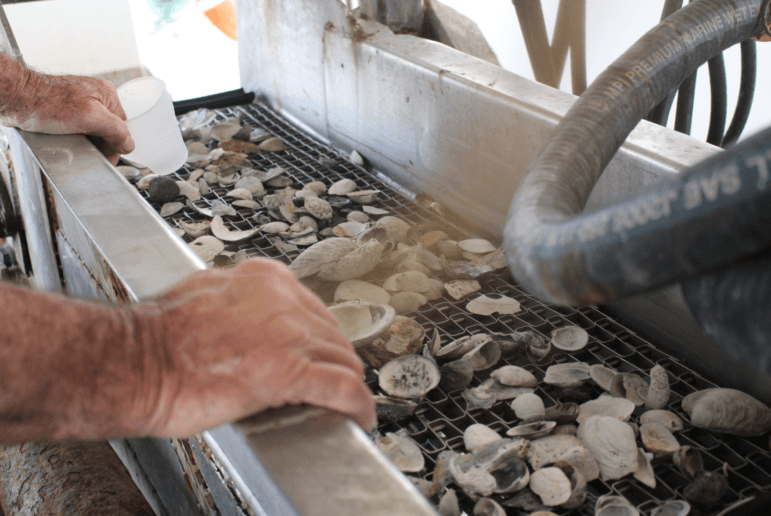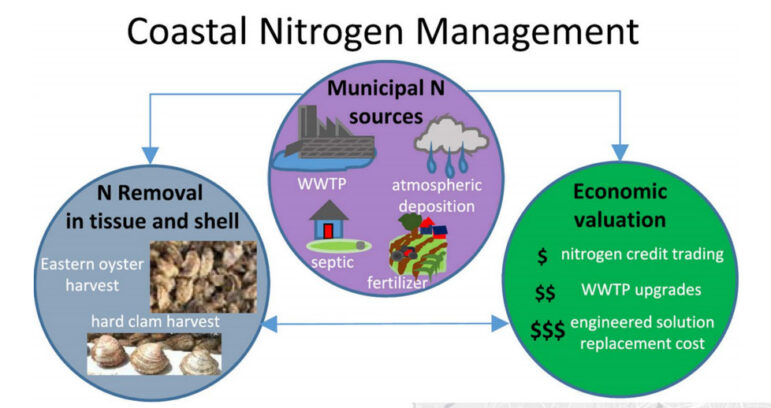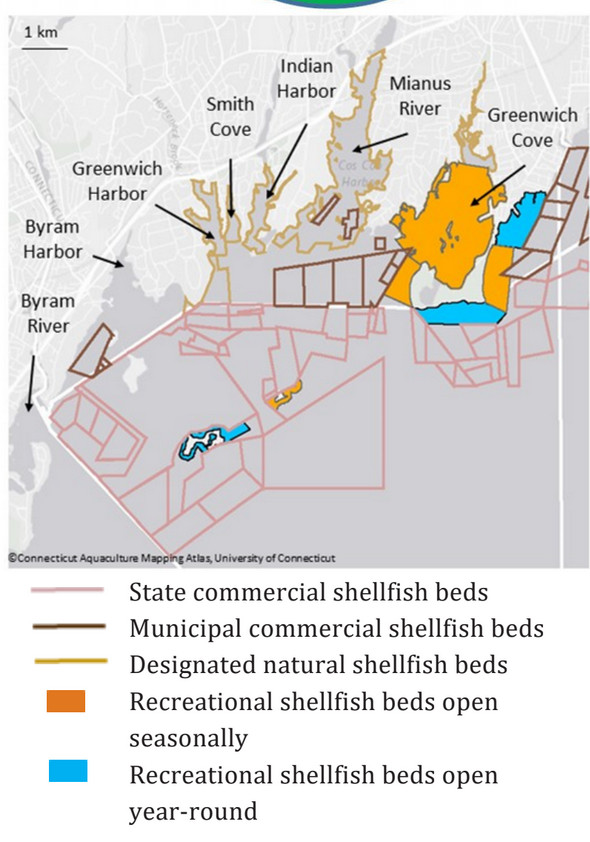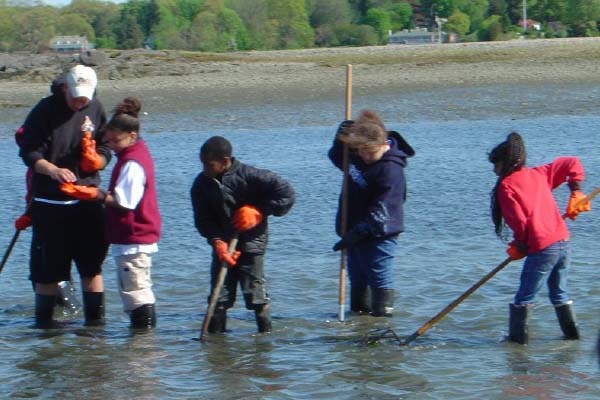Recently the Greenwich Shellfish Commission worked with the National Oceanic and Atmospheric Administration (NOAA) in Greenwich Cove and Greenwich waters in general.
In addition to a 3″ oyster filtering a minimum of 50 gallons of water a day and a three inch clam about 20 gallons, it has now been scientifically demonstrated by NOAA’s research that shellfish also continuously remove Nitrogen from the watershed.
This is key to the health of Long Island Sound.

Nitrogen is a nutrient, but too much of it fuels algae growth, which in turn causes environmental problems. A growing number of communities follow regulations to reduce the amount of nitrogen they release.
Nitrogen comes from many different sources, including agriculture,
fertilizers, septic systems, and treated wastewater.
The good news is that clams and oysters take up nutrients when they graze
on algae.
Shellfish aquaculture can be an important part of nutrient management, and other coastal communities can borrow this methodology to consider their economic value.
NOAA and the Greenwich Shellfish Commission brought together the expertise of shellfish biologists, economists and modelers to develop a way to estimate the economic value of oyster and clam aquaculture to Nitrogen reduction in Greenwich.
They determined the estimated cost of replacing the nutrient removal benefits of shellfish aquaculture in Greenwich at between $2.3 million and $5.8 million.
Greenwich Stats:
NOAA fact sheet. Valuing the Water Quality Benefits of Shellfish: Greenwich Partnership
4,173 acres of hard clam leases
6.3 acres eastern oyster leases
920 acres of recreational shellfishing
They also determined that 9% of Nitrogen is removed from the Greenwich watershed annually by hard clam and oyster aquaculture, or about 31,000 pounds of nitrogen per year!
NOAA says other coastal communities can adapt Greenwich’s innovative methods to estimate the value of shellfish nutrient removal.

The partnership between the Greenwich Shellfish Commission and NOAA offers a transferable replacement cost model because Greenwich is a typical suburban watershed.
More than half of the local Nitrogen input is “nonpoint source,” such as runoff from lawn fertilizer, so a multifaceted nutrient management program is key.

Greenwich also has a thriving shellfish aquaculture industry, which makes it an ideal case study.
The shellfish industry is supported by Greenwich’s active and motivated shellfish commission. Volunteer efforts yield immeasurable value to the community.

Learn more: